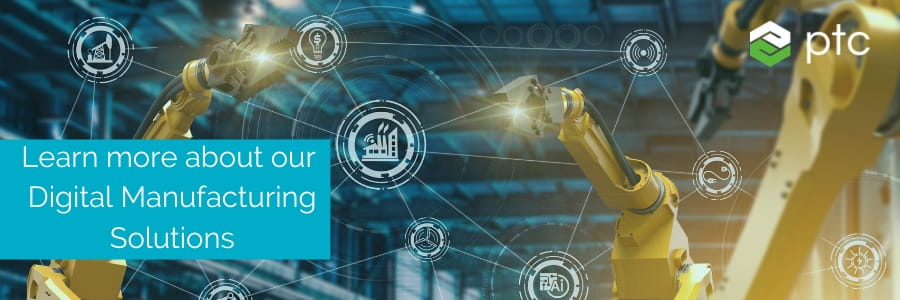Leah Gourley is a Digital Content Marketing Specialist based out of PTC's Boston office. She enjoys creating and sharing content surrounding the latest technologies that are transforming industries, including augmented reality and the industrial internet of things.
The current global market is demanding manufacturers to be more versatile and adaptive than ever. Shifting markets, changes, and innovations mean that manufacturers need to stay one step ahead of the game to remain competitive. Benchmarking based on accurate, reliable data is one way that manufacturers can judge their progress against competitors.
What is manufacturing benchmarking?
Manufacturing benchmarking is a way of measuring your strategies and performance compared to best-in-class competitors, in and outside the industry. The aim is to establish what the best practices should be within your organization to improve a company’s performance.
One of the main goals of adopting a benchmarking strategy is to ensure your overall equipment effectiveness is better than your competitors. By effectively benchmarking, you may have the opportunity to uncover useful business practices that can improve quality, cost-effectiveness and efficiency.
Uncover the benchmarking benefits
There are many benefits to a smart manufacturing benchmarking strategy.
1. Establish a leadership hierarchy: By understanding which companies are performing better at what, it makes it much easier to understand where you’re lacking, and what needs improving. This also gives you an understanding as to how much you have improved against your competitors over a specific period of time.
2. Understand performance gaps: Once you have identified an industry leadership hierarchy, you can start to go deeper into performance discrepancies. Once you understand where you’re going wrong, you can start to fix the problem.
3. Develop standardized processes: Benchmarking gives you the opportunity to be constantly updating and developing standardized processes throughout your organization.
4. Encourage a mindset and culture of continuous improvement: By routinely referring to industry benchmarks, you can encourage an attitude of improvement throughout your organization.
5. Sets performance expectations: Effective benchmarking also means your employees and executives are aware of what level of performance is expected of them.
Gain valuable benchmarking insights
By having your assets feed real-time data on their performance to a centralized dashboard, you can keep a track of all your key performance indicators in one place. In today’s connected workplace, the sensors attached to your assets would record key data and send them to be processed by an industrial internet of things (IIoT) gateway. The data will then be translated into actionable business insights. The data would be completely accurate and accessible in real-time.
By increasing the accuracy of the data, and decreasing difficulty of the data to collect, IIoT solutions are making it easier for manufacturing organizations to become fully data-driven organizations.
Most manufacturers rely on executive decision-making and leadership. When the whole organization has faith that those decisions have been made using the best available data, trust flows from the floor workers to the managers, and from the managers to the executive level.
IIoT Solutions for more effective manufacturing
Embracing IIoT solutions is increasingly a fundamental part of the digital transformation any manufacturing company undergoes to become a data-driven organization. When your decisions are based on accurate data, you can be confident that you made the best decisions with the highest quality data available.

